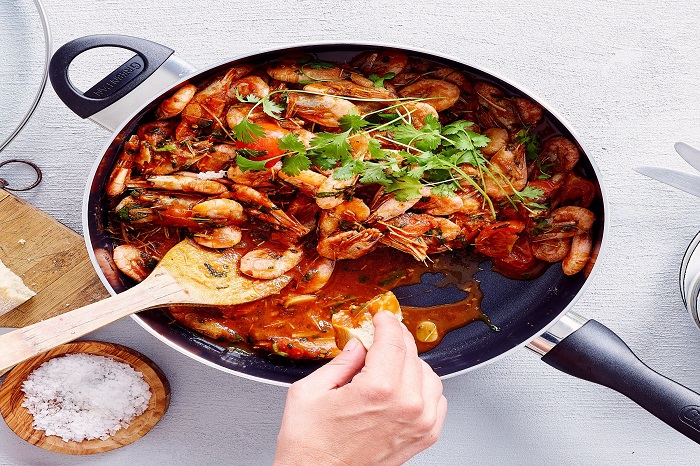Saute pans or skillets are versatile and essential pieces of cookware in any kitchen. They are designed to be used on stovetops, but they can also be used in the oven, making them perfect for a wide range of cooking techniques.
And this article will discuss the versatility of a saute pan, including its use on the stovetop and in the oven.
What Is a Saute Pan?
Table of Contents
This is a wide, shallow pan with straight sides, a long handle, and a lid. It is typically made of stainless steel, aluminium, or cast iron and is designed for sauteing, frying, searing, and other cooking techniques. They are available in different sizes, from small for single servings to large pans for family-sized meals.
Versatility on the Stovetop and Oven
Skillets are multi-functional kitchen tools well-suited for use on stovetops and ovens. Featuring straight sides and a generously sized cooking surface, they are capable of sautéing vegetables, frying eggs, searing meats, and even creating one-pan meals. Their unique ability to transition seamlessly from stovetop to oven makes them an ideal choice for dishes that require a combination of cooking methods, such as seared steak or baked casseroles. They offer convenience and adaptability and can help reduce clean-up time.
Cooking Techniques
The flexibility of skillets extends to the wide range of cooking techniques they can be used for. They are great for sauteing, which involves cooking food quickly in a small amount of oil over high heat. They are also ideal for frying and searing, which involves cooking food at high temperatures to create a crispy exterior. They can also be used for braising, simmering food in a small amount of liquid over low heat and making sauces and gravies.
Size and Shape
The size and shape of your skillet will determine what you can use it for. A larger pan will allow you to cook larger quantities of food, while a smaller one is perfect for single servings or cooking smaller dishes. The shape of the pan can also affect how you cook with it. A pan with straight sides will be more flexible for cooking different types of dishes, while a pan with sloping sides may be better for dishes that require constant stirring, such as risotto.
Material
When it comes to a frying pan, there are several materials to choose from, including stainless steel, cast iron, and non-stick. Stainless steel pans are durable and strong but can be prone to sticking. Cast iron pans are great for heat retention and even cooking, but they require regular seasoning to maintain their non-stick surface. Non-stick frying pans are easy to clean and require less oil when cooking, but they may not last as long as other materials.
Cleaning and Maintenance
To keep your skillet in good condition, cleaning and maintaining it properly is essential. Stainless steel and cast iron skillets can be cleaned with soap and water, while non-stick ones require a gentler approach to prevent damage to the non-stick coating. It is essential to follow the manufacturer’s instructions for care and maintenance to ensure your pan lasts for years. Additionally, seasoning your cast iron skillet can help prevent rust and keep it in good condition.
A saute pan is an incredibly flexible and essential piece of cookware in any kitchen. They can be used on the stovetop and in the oven, making them perfect for various cooking techniques. When choosing them, consider the size and shape, material, and cleaning and maintenance requirements to ensure you choose the perfect pan for your needs. With a high-quality pan in your kitchen, you can cook many delicious dishes with ease and versatility.







